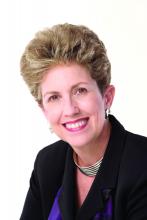For the seventh straight year, the Main Residency Match experienced record growth, with more spots for residency programs and a higher number of slots filled than ever before.
A total of 38,376 applicants in 2019 submitted program choices for 35,185 positions, a 6% slot increase from 2018, while the number of available first-year (PGY-1) positions rose to 32,194, an increase of 6.5% (1,962) from 2018, according to data from the National Resident Matching Program (NRMP). Of the total PGY-1 positions offered, 95% were filled.
“Many of the programs previously accredited by the American Osteopathic Association came into our match this year because they’re now accredited by the [The Accreditation Council for Graduate Medical Education],” Ms. Signer said in an interview. “That contributed to a significant increase in physicians and a significant increase in the number of applicants.”
Family medicine residency programs offered 4,107 positions this year, up by 478 from 2018. Of the family medicine offerings, 93% positions were filled, and 39% were filled with U.S. allopathic seniors. The number of U.S. allopathic seniors matching to family medicine decreased in 2019; however, a record 986 osteopathic students matched to family medicine, accounting for 26% of all applicants who matched to the specialty.
Internal medicine programs offered 8,116 positions in 2019, 574 more than in 2018. Of internal medicine programs, 97% of the positions were filled and 42% were filled with U.S. allopathic seniors. The NRMP notes the percentage of internal medicine positions filled by U.S. allopathic seniors has declined every year since 2015.


